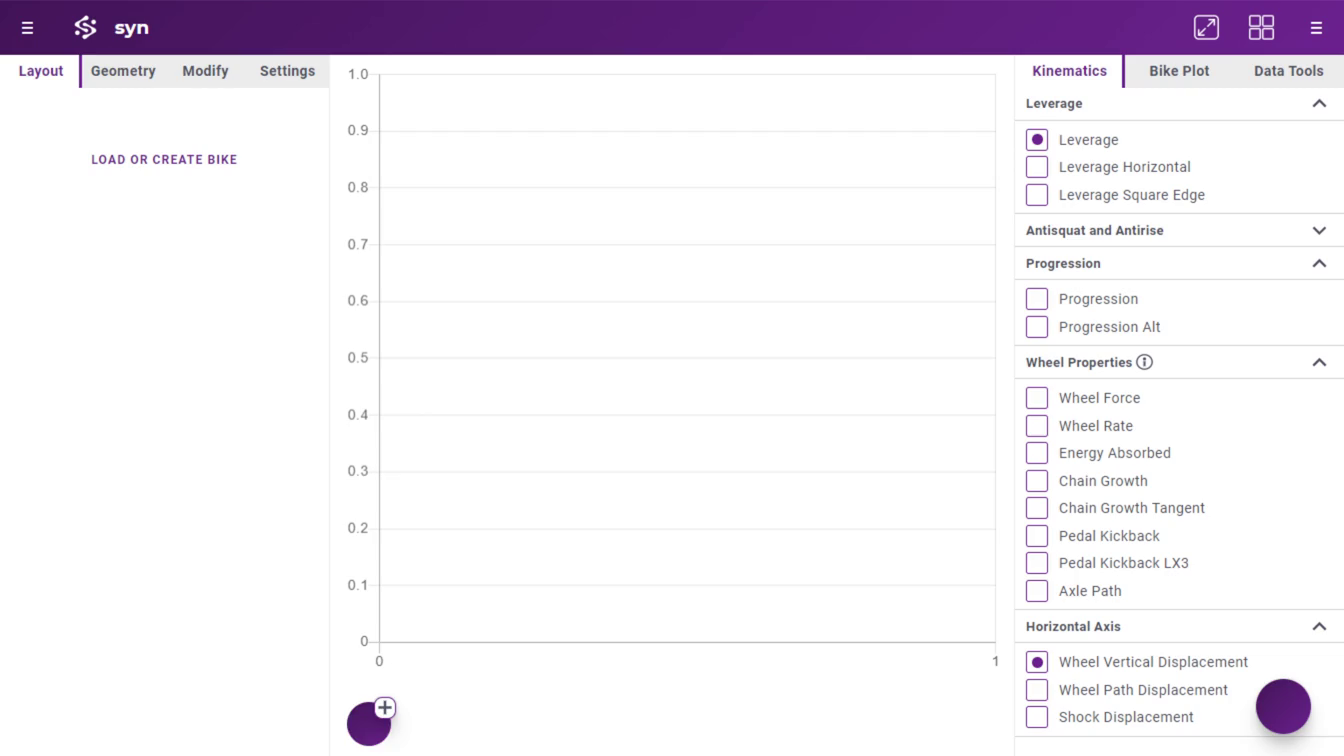Smarter Solutions.
Syn offers complete control of your linkage configuration with a powerful force-based solving engine. Support for fully floating shocks, slider-element systems, moving idlers, brake-arms and any arrangement of links from single pivots through to six-bar.
Optimize.
Eliminate endless trial and error by leveraging powerful global optimization algorithms on high speed cloud servers. Enter boundary conditions for your point positions, draw the curves you want to generate and let the solver run. Quickly narrow in on what's possible for your layout.
Modify.
The best results require iteration. Avoid complicated CAD analysis and adjust designs using linkage flip chips, suspension size changes, and components like cockpit parts or anglesets. Get real-time feedback with updated curves and comprehensive geometry comparison charts. Save multiple chip configurations to quickly switch between setups while analysing.
Better Kinematics.
Analyzing bike performance digitally requires more than just a review of leverage and anti-squat. With the myriad of spring configurations, linkage arrangements and fitment constraints better tools are needed to see how your platform will act. We provide new metrics and refined definition to existing ones.
Leverage
Leverage is how much force your shock will see relative to a given wheel force. By looking at several different directions of input forces the wheels reaction to trail input can be better analyzed. We offer the classic vertical leverage rate, a sag-normalized rate, and a square edge bump rate. Comparing the different leverages can offer insight into how your bike will balance rider support with impact absorption.
Wheel Properties
Looking at spring rates and forces at the wheel allows you to directly determine what the rider will feel. By factoring in air can configurations, volume spacers, and coil spring rates a complete picture of mid-stroke support and progression can be created.
Energy Absorption
The influence of volume spacers and spring rates makes determining a bikes resistance to bottoming out nearly impossible with only leverage rates. The system energy absorbed is a precise metric to see how a platform will deal with large impact events. When combined with wheel force and wheel rate plots the tradeoffs between bottom-out (progression) and midstroke support can be balanced.
Defined Geometry.
Syn includes an efficient geometry solver for fast iteration and review of the bike fit, steering geometry, and the impacts on suspension. Quickly change base dimensions like fork length, desired seatpost insertion, and effective STA and let the parametric engine update the derivative geometry in real time.
Total Fit
By including spec parameters such as stem length, bar dimensions, and nominal saddle heights a more accurate measure of rider fit can be generated. Syn provides a single combined measurement for this. Seated fit is defined as the distance from the centre of the seat axis at the given saddle height to the center of the grips.
Seat Tube Geometry
Seat tube angles are one of the most talked about geometry numbers of modern bike while also remaining one of the most poorly defined. The inclusion of a nominal saddle heights eliminates confusion and provides an accurate metric for saddle placement regardless of the discrepancy between actual and effective seat tube angles.
An additional parameter for required seatpost insertion provides instant and early visibility to potential clearance issues between tires, shock, and seat tubes which can be a major pain point with long dropper, large wheeled bikes.
Easy Import/Export.
Configurable solver resolution and one-click data export provide easy interfacing with third-party analysis tools. JSON parseable bike files allow easy integration with macro routines. Custom export formats available on request for enterprise usage.
Spring data can be easily imported and processed using a comprehensive toolset to interpolate between volume spacers, remove non-numeric data, convert units, and shift data points to even grid spacing.
